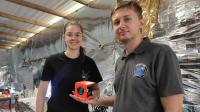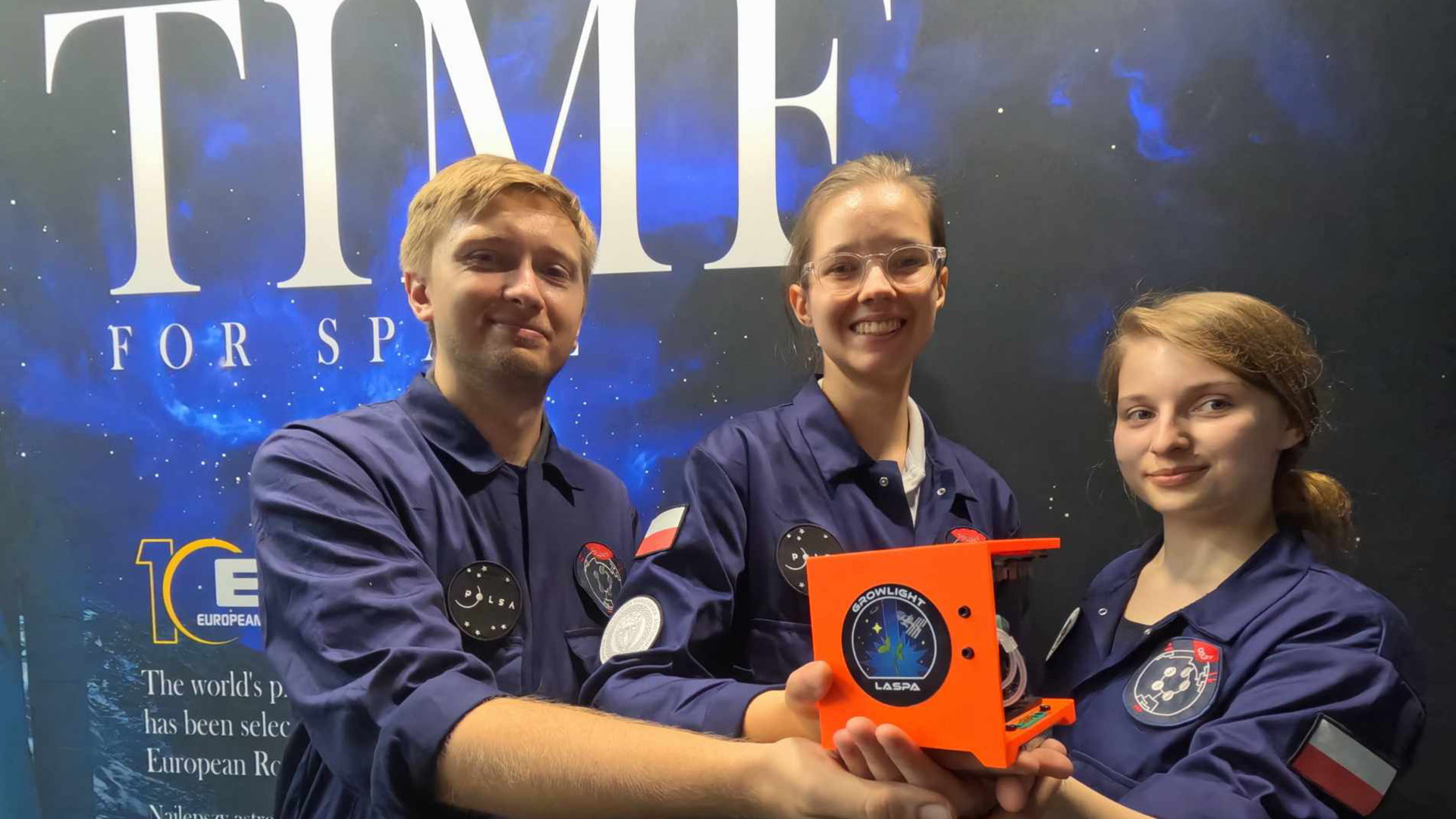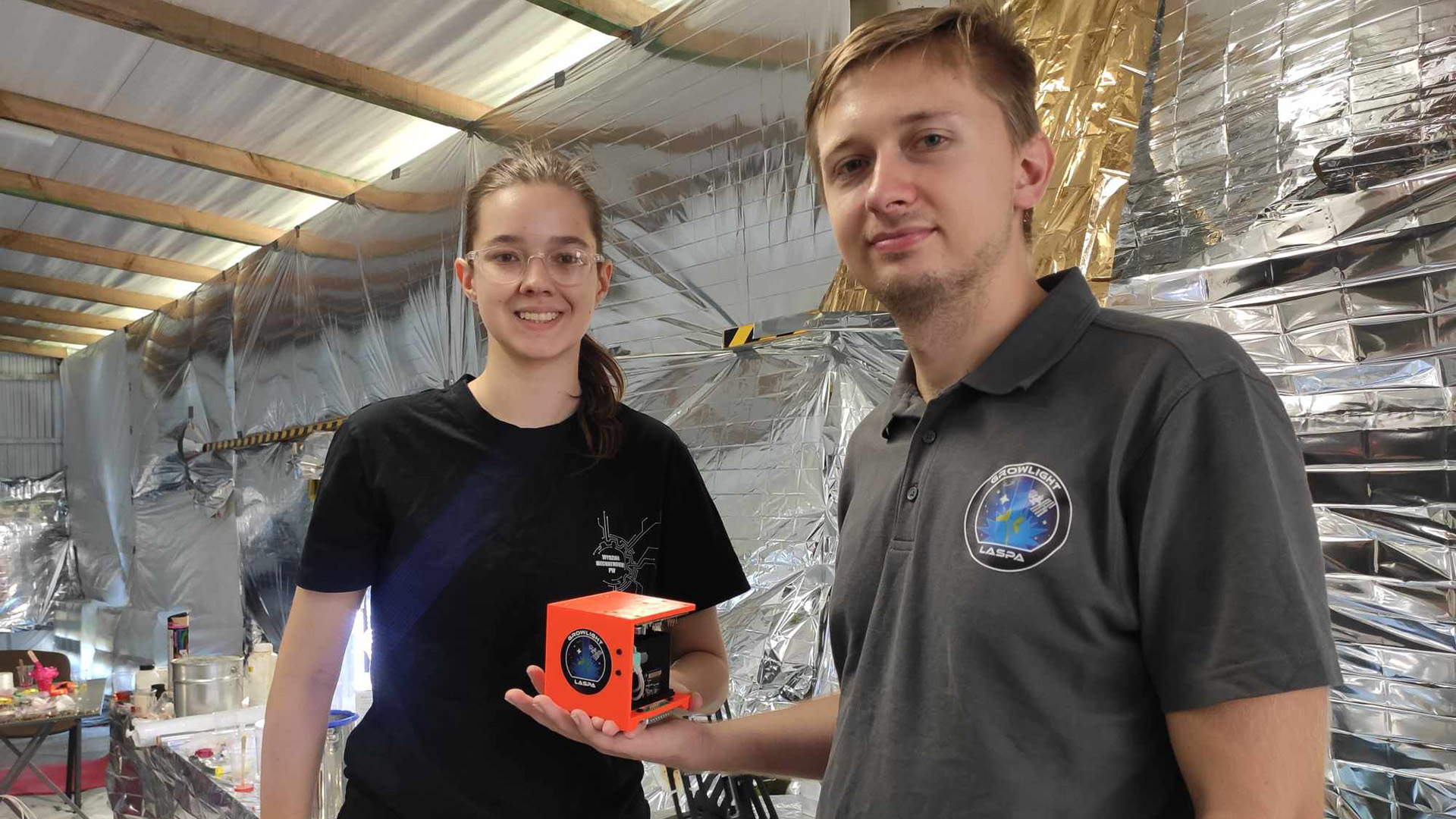Cosmic summer for two WUT students, or Mission Analog Colony 1
Yelyzaveta Leshchenko and Paweł Rukat – students at the Faculty of Mechatronics of the Warsaw University of Technology – spent part of their summer in an unusual way. They took part in the largest international analog lunar mission – Mission Analog Colony 1, organized by the Analog Astronaut Training Centre (AATC). It was attended by 30 analog astronauts from 5 continents.
Our students were invited to Mission Analog Colony 1 by their mentor, Dr. Agata Kołodziejczyk from AGH University of Krakow, who, knowing that they were working on a space project, counted on their presence and experience in the field of science and engineering.
The mission was divided into five teams: the Mission Operations Team (MOT), the Human Operations Team (HOT), the Science Team (ST), the Extravehicular Activity Team (ET) and the Engineering Team (ENT).
"During the mission, we were divided between the science team and the engineering team. Our goal was to take care of the technical efficiency of the habitat, create new technological solutions for the needs of other astronauts and their projects, as well as undergo various types of tests to check our health and mentality. Our everyday life and duties resembled the typical routine of real astronauts to an unexpected extent. We had a well-equipped workshop and laboratory zone at our disposal, and even a gym to keep ourselves fit. In addition to working for the entire crew, we were able to focus on further research of the LASPA project – Laser Amplitude Stimulated Plant Agriculture using RPM machines, i.e. Random Positioning Machines, to simulate reduced gravity and a laboratory where we could prepare our samples in advance," says Yelyzaveta Leshchenko.
Cosmic conditions close to... Tarnów!
The habitat where the experiment took place was in a small town about 40 km south of Tarnów. It was a place very far from the hustle and bustle of the city, where you could really feel like you were on an alien planet.
“The mission lasted 7 very long days, during which we were completely isolated inside the ‘lunar’ habitat, which served as protection against the ‘outer space’ outdoors. The schedule of each astronaut began in the morning, it was our hour T+0:00, every day at fixed times, for example at T+1:00 or T+6:00, we ate meals together, and in the meantime we had time for our duties and tests. The day often ended at T+16:00, when all the astronauts could go to bed after completing their daily reports. Measuring time in this way, we were never sure how long our day lasted, what time of the ‘Earth’ day we went to sleep or woke up,” recalls Yelyzaveta.
The only way to go outside the habitat was on an EVA mission - Extravehicular activity, which took place only in a full astronaut suit designed for these spacewalks. “The purpose of EVA could be, for example, to repair a damaged part of the habitat, to dispose of waste or - as in our case - simply to walk under the starry sky. There were also burdensome factors, such as the limited resources of technical and drinking water or the collection of biological samples for testing. All actions had to be for the good of the mission and the crew. No showers!” adds Yelyzaveta.
As stressed by Paweł Rukat – it was like nothing he had ever experienced before.
“It was by far the most faithful simulation of a space mission. I experienced a lot of stress combined with excitement. I never knew what the next day would bring, maybe something would go wrong? What would I have to focus on each day? I felt that all my activities were being monitored, and that they were important for the success of the entire mission. By far the most pleasant moment was my EVA, which I did at the end of the mission. It was absolutely amazing to see the starry sky after such a difficult time," noted Paweł.
During the mission, our students focused on the implementation of the innovative LASPA project, which this year received funding from the Large Fund for Scientific Experiments. “For me, it was an amazing experience that allowed me to feel like a real astronaut for at least a week. It is extremely important to see how many responsibilities an astronaut has during a mission, to take this into account when designing our own space project – which we are currently working on as part of the Photonics Engineering Student Club. Thanks to the Large Pool for Scientific Experiments that we obtained this year, we were able to create a prototype of a system for researching the effects of laser stimulation on plant growth in microgravity conditions – and we were just able to study this in conditions approximate to those on a space station, using RPM on an analog mission. The results obtained are very promising and we will continue to carry on with our work on the project so that in the future it may be used in a real space mission,” explains Yelyzaveta.











